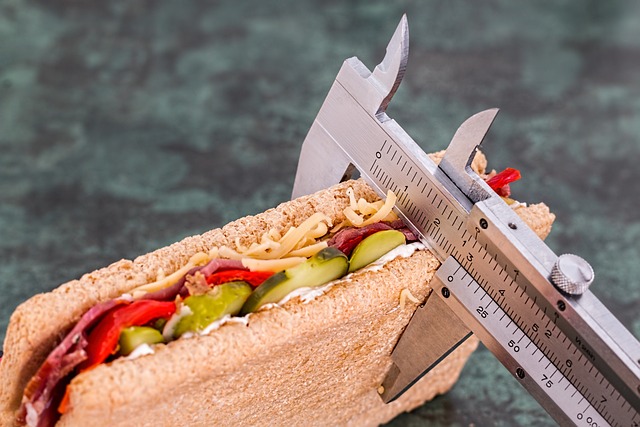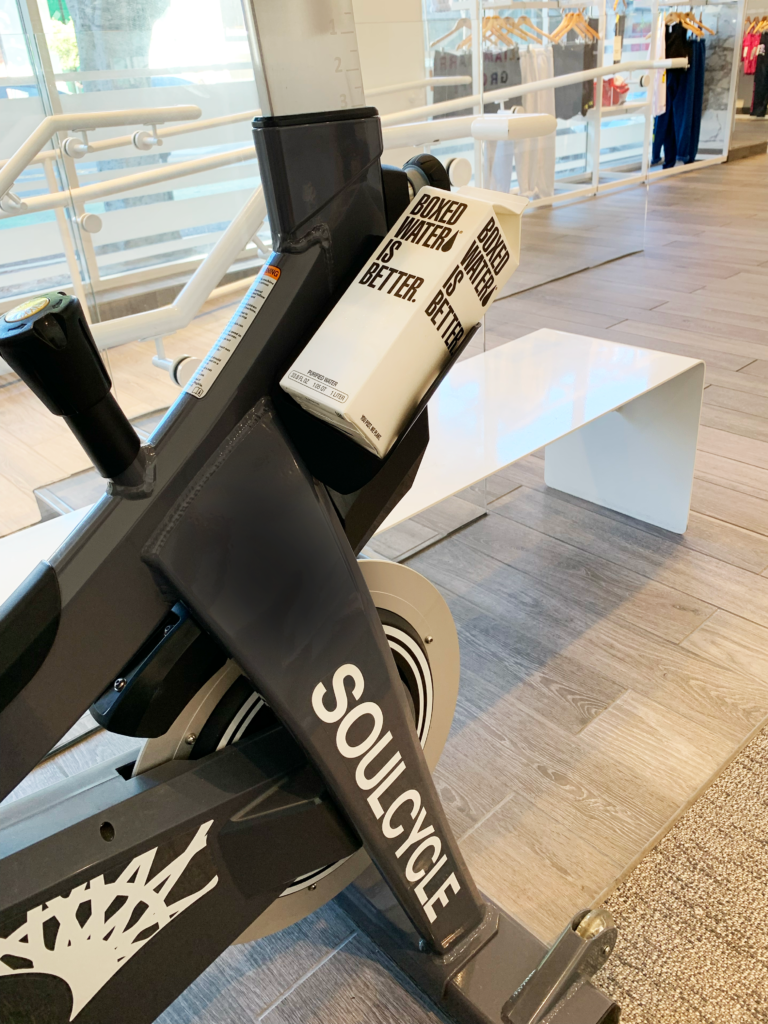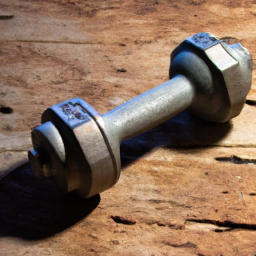Hey there! Are you curious about which workout routine burns more calories: HIIT or Cardio? Well, you’ve come to the right place! In this article, we’ll dive into the differences between these two popular workout styles and explore which one may be more effective in helping you burn those extra calories. Whether you’re a fitness enthusiast or just starting your fitness journey, you’re bound to learn a lot and gain some valuable insights. So, let’s get started and find the workout routine that suits your calorie-burning goals!
If you’ve always wondered whether HIIT or Cardio is the better choice for torching calories, this article will provide you with all the information you need. We’ll discuss the benefits and drawbacks of both HIIT and Cardio, as well as consider factors such as intensity, duration, and effectiveness in burning calories. By the end of this article, you’ll have a clearer understanding of which workout routine may be more suitable for you and your fitness goals. So, let’s dive in and explore the world of calorie-burning workouts together! When it comes to getting in shape and burning calories, there are many workout options available. Two popular choices are HIIT (High-Intensity Interval Training) and Cardiovascular exercises (Cardio). Both of these workout routines have their own unique benefits and can help you achieve your fitness goals. In this article, we will explore the differences between HIIT and Cardio, the calories burned in each, their impact on metabolism, effectiveness for weight loss, ideal duration and frequency, suitability for different fitness levels, and injury risks. By the end of this article, you will have a better understanding of which workout routine is the right choice for your personal fitness journey.

What is HIIT?
Definition of HIIT
HIIT, or High-Intensity Interval Training, is a form of exercise that combines short bursts of intense activity with periods of rest or lower intensity. The goal of HIIT is to elevate your heart rate and push your body to its limits in a short amount of time. HIIT workouts are typically designed to be intense, lasting from 10 to 30 minutes and can be done with or without equipment.
Benefits of HIIT
There are numerous benefits to incorporating HIIT into your fitness routine. Firstly, HIIT is known to be a time-efficient workout. With shorter workout durations, you can achieve similar or even better results compared to longer, steady-state cardio sessions. HIIT also helps to improve cardiovascular endurance, as it challenges your heart and lungs to work harder during the high-intensity intervals.
Additionally, HIIT has been found to increase metabolism and keep it elevated even after the workout is over. This phenomenon is known as the EPOC effect, or excess post-exercise oxygen consumption. The EPOC effect allows your body to continue burning calories at a higher rate even during periods of rest. This can be beneficial for weight loss and fat burning.
How HIIT works
During a HIIT workout, you perform short bursts of intense exercises, such as sprinting, burpees, or squat jumps, followed by periods of active recovery or rest. The high-intensity intervals should push you to your maximum effort, while the recovery periods allow your body to catch its breath and prepare for the next round of intense exercise. The ratio of work to rest can vary depending on your fitness level and goals.
What is Cardio?
Definition of Cardio
Cardio, short for cardiovascular exercise, refers to any physical activity that elevates your heart rate and increases blood circulation. It is typically characterized by steady-state and sustained aerobic activities that are performed for an extended period of time. Examples of cardio exercises include jogging, cycling, swimming, and brisk walking.
Benefits of Cardio
Cardiovascular exercise offers a wide range of benefits for overall health and fitness. Regular cardio workouts can help improve heart health, increase lung capacity, and enhance cardiovascular endurance. It also aids in weight management, as it helps burn calories and can contribute to a calorie deficit when combined with a balanced diet.
How Cardio works
During a cardio workout, you engage in continuous, rhythmic movements that elevate your heart rate and increase oxygen consumption. The sustained moderate intensity of cardio exercises challenges your heart and lungs to work efficiently over an extended period of time. This constant effort helps improve your cardiovascular fitness and endurance.

Calories Burned in HIIT
Factors affecting calories burned in HIIT workouts
The number of calories burned during a HIIT workout can vary depending on several factors, including your body weight, the intensity of the exercises, the duration of the workout, and your fitness level. Generally, the more intense the workout, the more calories you will burn. Exercises that involve larger muscle groups, such as squat jumps or burpees, tend to burn more calories than exercises that target smaller muscle groups.
Average calories burned in different HIIT exercises
On average, a 30-minute HIIT workout can burn anywhere from 200 to 450 calories, depending on the intensity. However, keep in mind that this is just an estimate and individual results may vary. It’s important to note that HIIT workouts continue to burn calories even after you have finished exercising, thanks to the EPOC effect.
Calories Burned in Cardio
Factors affecting calories burned in cardiovascular exercises
Similar to HIIT, the number of calories burned during a cardio workout depends on several factors, including body weight, exercise intensity, duration, and fitness level. However, cardio exercises tend to be less intense than HIIT workouts and may not have as significant an impact on post-workout calorie burning.
Average calories burned in different cardio workouts
A 30-minute cardio workout can burn approximately 150 to 400 calories, depending on the exercise and intensity level. Running and cycling at a higher intensity tend to burn more calories compared to walking or low-impact activities like swimming. They engage more muscles and require greater effort, resulting in increased energy expenditure.

Comparison of Calories Burned
HIIT vs. Cardio: Which workout burns more calories?
When comparing calories burned, it’s important to consider the intensity and duration of the workout. HIIT workouts, with their shorter and more intense bursts of activity, generally burn more calories within a shorter duration compared to cardio exercises. However, it’s worth noting that the calories burned during a workout is only part of the equation. The EPOC effect of HIIT can contribute to increased calorie burning even after you have finished exercising.
Calories burned during a specific time period
If you have limited time for exercise, HIIT may be a more time-efficient option for burning calories. In a 30-minute HIIT workout, you can burn a significant amount of calories due to the high-intensity intervals. On the other hand, a 60-minute cardio workout may be required to achieve a similar calorie burn. However, it’s important to choose a workout routine that aligns with your goals, preferences, and fitness level.
Impact on Metabolism
EPOC effect – how HIIT affects metabolism
One of the unique benefits of HIIT is its impact on post-workout metabolism. The EPOC effect, also known as the “afterburn effect,” refers to the increased calorie burning that occurs after a workout. HIIT has been found to elevate metabolism for hours after the workout, as your body works to replenish oxygen stores, repair muscle tissue, and restore physiological systems to a resting state. This means that even when you’re not exercising, your body continues to burn calories at an elevated rate.
Long-term impact of HIIT on metabolism
In addition to the immediate EPOC effect, regular HIIT workouts can have a long-term impact on metabolism. HIIT has been shown to improve mitochondrial function, which is essential for energy production. As a result, your body becomes more efficient at using energy and burning calories, even at rest. This can be especially beneficial for weight management and fat loss.
Cardio’s impact on metabolism
While cardio exercises also have a positive impact on metabolism, the effects may not be as significant as those seen with HIIT. Moderate-intensity cardio workouts can temporarily elevate metabolism during the workout and for a short time afterward. However, the long-term metabolic benefits of cardio may not be as pronounced as those of HIIT.
Weight Loss and Fat Burning
HIIT’s effectiveness for weight loss
HIIT workouts are often touted as an effective tool for weight loss. The combination of high-intensity intervals and the EPOC effect can help create a calorie deficit, which is essential for weight loss. Additionally, HIIT workouts have been shown to preserve lean muscle mass while reducing body fat, providing a more toned and defined physique.
Cardio’s effectiveness for weight loss
Cardio exercises, particularly those performed at a sustained moderate intensity, can also contribute to weight loss. By burning calories and creating a calorie deficit, cardio workouts can help you shed excess pounds. However, it’s worth noting that prolonged cardio sessions may lead to muscle loss, especially if nutritional needs are not adequately met.
Which routine is better for fat burning
Both HIIT and cardio workouts can be effective for fat burning, but they have different mechanisms. HIIT is known for its ability to increase post-workout calorie burning, which can be beneficial for fat loss. On the other hand, cardio exercises, when performed for an extended period of time, can tap into stored fat as an energy source. The best approach may be to incorporate both HIIT and cardio into your fitness routine to maximize fat burning and overall weight loss.
Duration and Frequency
Ideal duration and frequency for HIIT
Since HIIT workouts are intense and physically demanding, it’s important to allow enough time for rest and recovery between sessions. For most individuals, 2-3 HIIT workouts per week, with a duration of 20-30 minutes per workout, is sufficient. This frequency allows your body to adapt and recover while still reaping the benefits of the high-intensity intervals.
Ideal duration and frequency for Cardio
The frequency and duration of cardio workouts may vary depending on your fitness level and goals. As a general guideline, aim for at least 150 minutes of moderate-intensity cardio exercise or 75 minutes of vigorous-intensity exercise per week. This can be spread throughout the week to allow for recovery. However, it’s important to listen to your body and adjust the frequency and duration as needed.
Finding the right balance for your goals
Finding the right balance between HIIT and cardio workouts depends on your individual goals, preferences, and fitness level. If your main focus is on burning calories and increasing metabolic rate, incorporating more HIIT workouts into your routine may be beneficial. However, if you enjoy longer, steady-state cardio sessions or have specific cardiovascular goals, cardio exercises can be a valuable addition. Experiment with different combinations and listen to your body to find the right balance that works best for you.
Suitability and Accessibility
Suitability of HIIT for different fitness levels
HIIT workouts can be modified to suit different fitness levels, from beginners to advanced athletes. The intensity of the exercises, duration of the intervals, and length of the workout can be adjusted to match your fitness level. Beginners may start with shorter intervals and longer rest periods, gradually increasing the intensity and duration over time. It’s important to listen to your body and progress at a pace that feels challenging but sustainable.
Cardio’s accessibility for all fitness levels
Cardio exercises are generally accessible to people of all fitness levels. The intensity and duration can be adjusted based on your current fitness level and goals. Walking or low-impact activities like swimming or cycling can be excellent options for beginners or those recovering from injuries. As your fitness improves, you can gradually increase the intensity or duration to continue challenging yourself.
Injury risk in HIIT and Cardio
Both HIIT and cardio workouts carry a certain level of injury risk, especially if proper form and technique are not followed. Since HIIT involves high-intensity movements, there is an increased risk of musculoskeletal injuries, such as strains or sprains. It’s important to start slowly, warm up adequately, and listen to your body to prevent injuries. Similarly, overdoing cardio exercises or performing repetitive movements can lead to overuse injuries. Be mindful of your body’s limitations and incorporate proper rest and recovery days into your routine.
Conclusion
Factors to consider when choosing between HIIT and Cardio
When deciding between HIIT and cardio workouts, it’s important to consider various factors, including your fitness goals, preferences, time availability, and injury risk. HIIT workouts offer a time-efficient option for burning calories and increasing metabolism, while cardio exercises can help improve cardiovascular endurance and contribute to weight management. For optimal results, it may be beneficial to incorporate both HIIT and cardio into your fitness routine.
The right choice for your personal fitness journey
Ultimately, the right workout routine for you depends on your individual preferences and goals. If you enjoy intense, shorter workouts and want to maximize calorie burn and metabolic rate, HIIT may be a good fit. On the other hand, if you prefer longer, steady-state sessions and want to focus on cardiovascular endurance, cardio exercises can be a great choice. Remember to listen to your body, progress at a pace that feels challenging yet sustainable, and choose a workout routine that you enjoy and can stick to in the long run.


